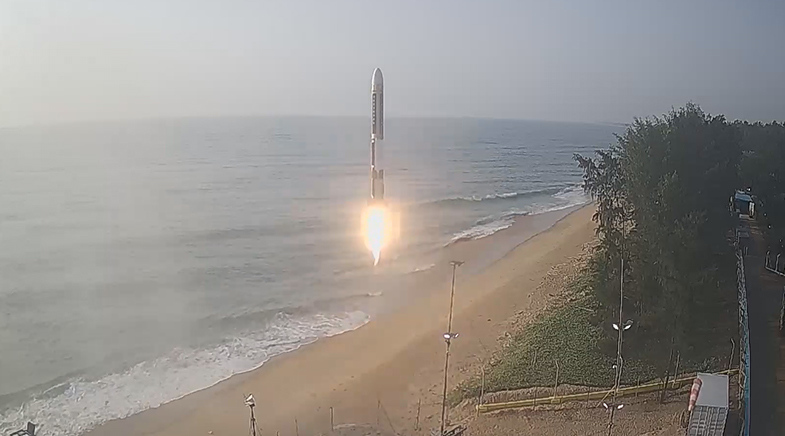The golden age of Indian astronomy
-
- from Shaastra :: vol 02 issue 02 :: Mar - Apr 2023

India's scientific infrastructure was non-existent when it became independent in 1947, barring some pockets like the Indian Institute of Science and a few universities. The Tata Institute of Fundamental Research (TIFR) was only two years old and didn't have its own building. The Indian Institutes of Technology had not been set up. There was some research in agriculture and a semblance of activity in industrial technology. The rest had to be created by the newly independent country, largely with its own money.
The creation of India's scientific infrastructure proceeded by fits and starts through the 20th century, with periods of intense development followed by stretches of inactivity. Meanwhile, the developed world continued to move ahead of India in most areas of science and technology. Although India has narrowed the gap now, there aren't many areas of science where the country can claim to be at the top.
The problem is especially acute in experimental science, which is often driven by expensive equipment and the presence of a high technology industry. It is hard to be an experimentalist in the country and work on big problems that challenge the very best in the world. Despite this limitation, experimental science has lived on in India and has sometimes thrived when the problems and equipment were carefully identified. Nothing illustrates this statement better than astronomy.
Indian astronomers can now observe the universe with a variety of tools. Even if these devices don't match the world's best, they are good enough for cutting-edge science.
There was no modern astronomy in India till the 1960s. Although there was a solar observatory in Kodaikanal, there was no sophisticated telescope with which to watch the universe at night. India built two telescopes in the 1960s and the 1970s, through the foresight of Vainu Bappu and Govind Swarup, two astronomers with a global reputation. The Ooty Radio Telescope, in particular, was a landmark in the development of radio astronomy in the country.
When built, the Ooty Radio Telescope was the world's largest. It was followed in the 1990s by the Giant Metrewave Radio Telescope (GMRT) near Pune. The two telescopes created a large pool of radio astronomers and an institution to continue the work. With GMRT, India was supposed to become a front-runner in radio astronomy.
Although plenty of good science was done with GMRT, it didn't produce major discoveries for long. The telescope still had its limitations, which had to be addressed to tackle the big problems in astronomy. Our Cover Story by Manupriya details how the upgraded GMRT (uGMRT) and other new telescopes are making a big difference to Indian astronomy, which has truly entered a golden era.
Indian astronomers can now observe the universe with a variety of tools: radio telescopes, optical telescopes, ultraviolet telescopes, X-ray telescopes. They have a telescope orbiting the Earth and will have more by the end of the decade. These telescopes may not match the capability of a Hubble or a James Webb or the Chandra X-ray telescope, but they are good enough to do cutting-edge science.
Astronomy has a special place in the history of science. It fires the imagination of children and inspires them to study science. At the other end, building sophisticated telescopes requires truly cutting-edge technology, some of which trickles down to other areas of science and industry. Astronomy is important to develop the soul of a nation. It is important for its economy, too.
Elsewhere in the issue, our reporters tackle other areas that are important to the development of 21st-century India. On Green is the new black, T.V. Jayan writes about a big change in chemical manufacturing: the use of electricity to drive reactions. Although the technology is under development, its impact can easily be visualised as some of the most polluting industries will change forever.
Nowhere is this more evident than in the manufacture of ammonia, the world's most useful chemical and the third-most polluting in terms of carbon emissions. Jayan provides a glimpse of the work that is going around the world and in India, but the activity is more extensive than can be captured in one story. We will return to this theme in future issues.
On They pass the acid test, Aditi Jain writes about the attempts to supplant the list of amino acids that nature uses to build proteins. Making proteins with new amino acids can provide new uses for them, and the early attempts by scientists provide fascinating hints about how a large industry can develop in the future.
We have a more varied list of stories this time, and to accommodate them we had to curtail the books section. That's not something we like doing, but we will have the usual fare next time.
See also:
Have a
story idea?
Tell us.
Do you have a recent research paper or an idea for a science/technology-themed article that you'd like to tell us about?
GET IN TOUCH














